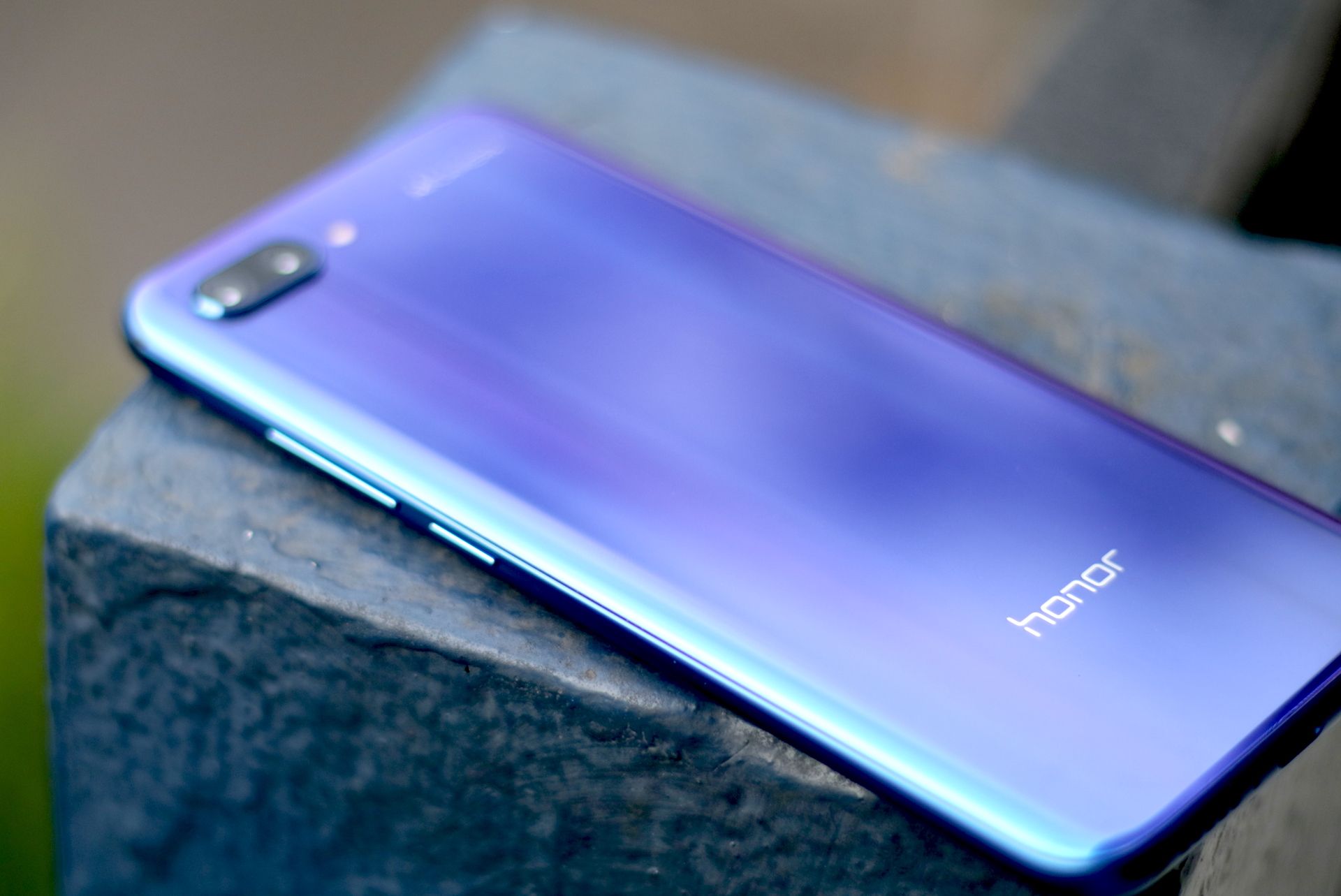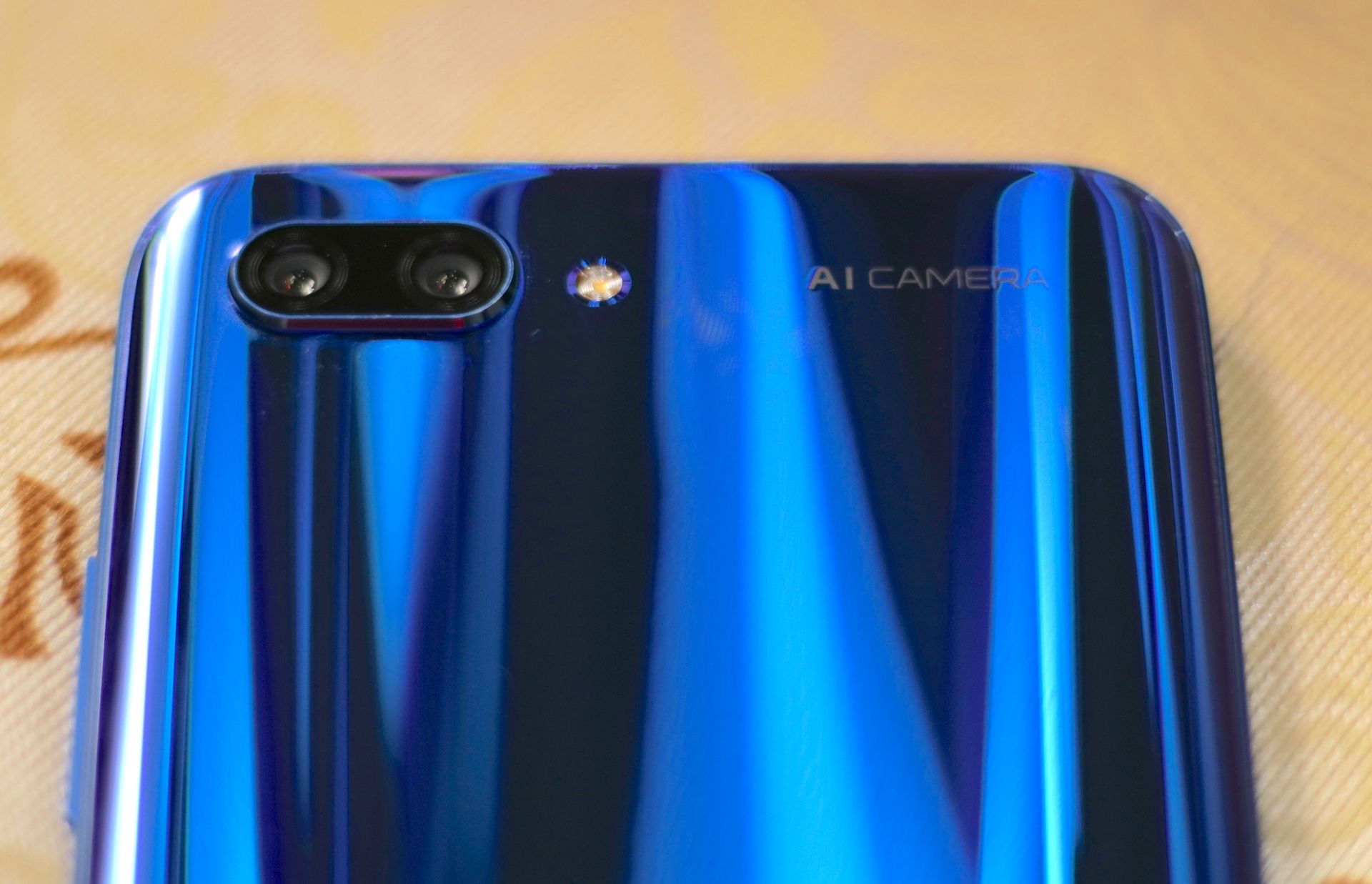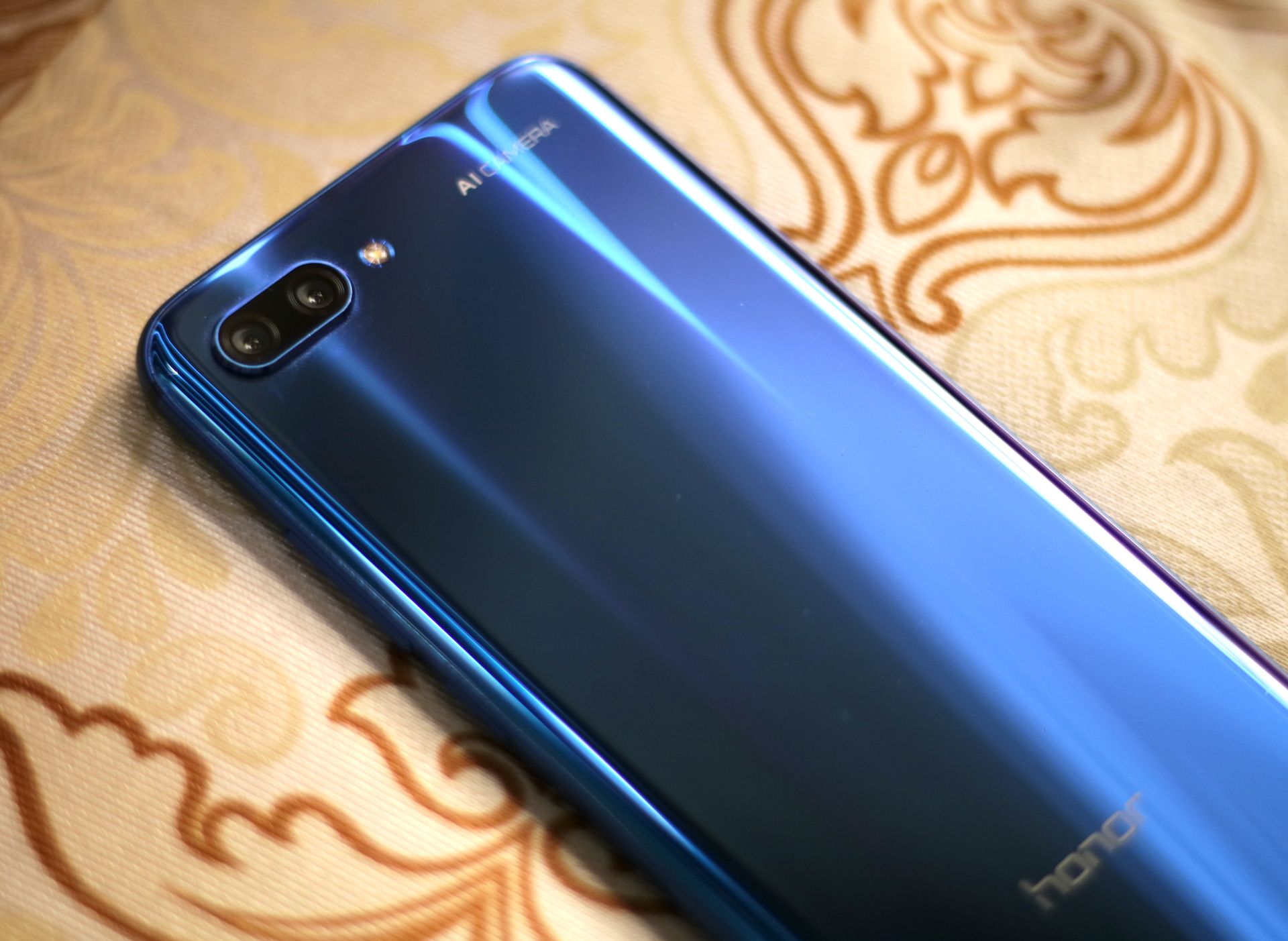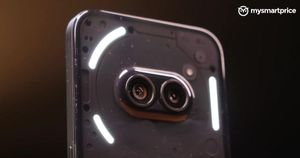
Huawei has been on a roll in India for the past few months. After the success of the Honor 9 Lite (review) and the Honor 7X (review), it launched the Honor 10 in the country recently. The Honor 10 is Huawei’s own take on its more premium and flagship smartphone, the Huawei P20 Pro (review), but with some compromises to keep its price down.
Honor 10
Rs. 32,999What Is Good?
- Looks impressive
- Plenty of software features
- Good rear-facing camera
- Value for money
What Is Bad?
- Average front-facing camera
- Slow battery charging speed
- Emotion UI design needs improvement
In India, the Honor 10 takes on the mighty OnePlus 6 (First Impressions). Honor might be a bigger smartphone brand than OnePlus, but it is the latter which enjoys a better brand value and recognition in India. So, is the Honor 10 good enough to take on the OnePlus 6 and carve a name for itself in the crowded Indian smartphone market? Let’s find out in our review.

Honor 10 Review: Design
The Honor 10 features glass panels at the front and the rear which sandwiches its aluminium chassis. While most glass phones look alike, the Phantom Blue Honor 10 has a unique twilight look at the rear which helps it stand out from a sea of other phones featuring a glass back. Depending on how light strikes the rear of the device, the Honor 10 will look either blue or slightly purple. It is a subtle effect but one that really helps make the phone standout. The rear of the phone is a slab of glass with a horizontal dual-camera setup located at the top-left corner. The Honor logo and the AI camera branding are also highlighted at the rear.
The front of the Honor 10 is all about its 5.84-inch Full HD+ LCD display. It is a notched display so notch haters are not going to be pleased looking at the front. At first glance, some people might mistake the Honor 10 for an iPhone X but then the same could be said for almost every other phone featuring a notched display. Honor has done well to use the notch to maximize screen size. The Honor 10 feels extremely compact despite its 5.84-inch display. As for the notch, Honor has used it to house the front-facing camera and other necessary sensors.
There’s also a chin at the bottom which houses an under-glass fingerprint scanner. The fingerprint scanner itself is located below the glass and you need to place your finger on the area marked on the glass for it to work. It is a wee bit slower than the regular fingerprint scanners found on most devices, but it seems to work better with wet and dirty fingers. Plus, the Honor 10 has the Face Unlock feature so it is not like you are going to use the fingerprint scanner all the time. The feature is complemented with ‘raise to wake’ which allows you to unlock the device by simply raising it and looking at the display.
While the Face Unlock feature on the Honor 10 works as advertised, there’s definitely room for improvement. It will occasionally fail to work in low-light scenarios and its accuracy is not as impressive as face unlock on the OnePlus 6. As for ports, the USB-C connector and headphone jack (yes, it is still there!) are located at the bottom alongside the mono speaker. The volume buttons and power buttons are located on the right side, while the left side houses the dual nanoSIM card slot. The IR blaster and a secondary microphone are located at the top. The Honor 10 is among the handful of phones available in India to support dual-VoLTE connectivity.
The Honor 10 is a beautiful device to look at but Honor/Huawei could have done more to reduce the bezels on the device. The bottom bezel is relatively big when compared to the OnePlus 6. Even the side bezels could have been reduced by a hair or two which would have helped in creating a better bezel-less illusion. The fingerprint sensor should’ve been at the rear of the phone so as to reduce the bezel below the screen.
Honor 10 Review: Screen

As for the 5.84-inch FHD+ display, it is hard to find faults in it. It can get plenty bright, has great viewing angles, contrast ratio, and offers fairly great color accuracy. Being an LCD panel though, it lacks the oomph that you would find in an OLED panel in terms of vividness and that ‘wow’ factor. It is also not laminated to the cover glass which would have further improved its quality.
None of this means that the LCD panel is bad by any means. Unless and until you are coming from a smartphone which already had an excellent OLED display like the Galaxy S8/Note 8, the Honor 10’s LCD display is going to be more than good enough for you. For the next flagship Honor device though, I’d like to see Huawei/Honor use an even better LCD panel or even better just switch to an OLED panel.
Honor 10 Review: Software, Performance

The Honor 10 runs on Android 8.1 Oreo with Huawei’s own Emotion UI on top of it. If you have never used Emotion UI before, prepare to be both impressed and disappointed. The skin is extremely intrusive and Huawei has not left any single part of ‘stock’ Android untouched. On the flip side though, there are a lot — and I mean a lot— of customizations options available for you to play around with. In fact, the customizations options might just be a bit too overwhelming for many. And if you start going through each and every feature and option in the device, you’d easily end up spending a day or two in doing so.
Some novel features in Emotion UI on the Honor 10 include the ability to disable the notch, raise to wake akin to iPhone X which makes the process of unlocking the phone using face unlock a breeze, and various other smart gestures. I am not a big fan of the intrusive UI though. The changes made by Huawei are a bit too in your face and the company definitely needs to tone its skin down. The icons and certain UI elements also look dated and it does not feel like the UI has been designed for a phone launched in 2018.
The Honor 10 is powered by Huawei’s own Kirin 970 chipset. An octa-core chip with a dedicated NPU, its high power cores can reach speeds of up to 2.36GHz. This is paired with 6GB RAM and 128GB of storage space. Huawei uses its Kirin 970 chip in its more expensive and premium handsets, the P20 and P20 Pro as well. Despite being based on the 14nm fab, it is a great chip which is plenty powerful for today’s workload, though the GPU performance is a generation or two behind that of Qualcomm’s latest Snapdragon chip. While the performance of the phone is fine, it can get warm when pushed hard, especially when on mobile data. This is also true for any GPU intensive tasks where the phone not only gets warm but its battery life also takes a major hit.
Huawei has also optimised its Emotion UI to ensure that despite the bevy of features it offers, there’s no negative impact on performance. This ensures that despite the heavy skin and even with plenty of apps installed, the Honor 10 does not suffer from any performance issues. Huawei has also increased the speed of most of the system animations to further reinforce the feeling of the Honor 10 being a fast phone. I used the Honor 10 as my daily driver for well over two weeks and came away impressed with its performance. It did not show any signs of lag or stutter even with more than 10 applications running in the background. However, I am not a fan of the reduced animation time as it takes away the feeling of the UI being put together elegantly.
In a bid to maximise battery life though, Huawei aggressively kills any background services which continuously led to my tasks and applets in Tasker and IFTTT not working properly after a few hours. In a phone with 6GB RAM and a beefy 3400mAh battery, you’d not expect such an experience as there’s more than ample resources for a few third-party services to run in the background. If you face any issues with a particular app after switching to the Honor 10, the blame likely rests on Huawei’s aggressive power management profile.
Honor 10 Review: Camera Quality

The Honor 10 comes with a dual-camera setup at the rear. The primary 16MP shooter features a ƒ/1.8 aperture and it is assisted by a 24MP monochrome sensor (with ƒ/1.8 aperture). It is definitely an odd setup since there’s no secondary telephoto sensor here as seen on the iPhone or a wide-angle lens as found on the LG G series. However, Huawei has been using a similar camera setup on its devices for a few years now so it is definitely tried-and-tested.
Other usual camera features like PDAF, HDR, face recognition, 4K video recording, and Portrait mode are also onboard. There’s also an AI (artificial intelligence) mode for the camera which Honor is making a lot of noise about. The AI helps the camera app to automatically recognise a scene and then switch to the relevant mode thereby enhancing the final image. As for the secondary 24MP monochrome sensor, it works in tandem with the primary 16MP shooter to capture more details. Since its monochrome in nature, it is able to capture more details at lower noise levels compared to the primary sensor. The higher resolution of the secondary sensor also allows Huawei to offer 2x hybrid zoom on the device.
Honor has been highlighting the camera performance of the Honor 10 as its strong point, and the camera definitely shows promise. The Honor 10’s rear camera can capture detailed photos, and its low light performance is also pretty impressive. However, the camera performance is ruined by the boosted colours and saturation which can make a scene look unreal. This is especially evident if you click a photo with the AI mode enabled which unnecessarily boosts the colours and saturation of any scene. But then again, the AI mode works wonders in low light and allows the Honor 10 to capture photos with a manageable amount of noise and plenty of details. The AI mode can also automatically switch to HDR if required which helps in extracting more details from darker areas of a scene.
I will not recommend taking photos with the AI mode always enabled on the Honor 10 due to its tendency to boost colors unnecessarily. Instead, it is better to switch to the AI mode in low-light and HDR scenes and stick to the regular mode in other scenarios. If you are someone who likes playing around with the camera settings before clicking a photo, you will like the Honor 10’s camera app as it comes with a plethora of options.
For video recording, the Honor 10 can record them at 4K resolution at up to 30fps. Unlike newer flagship handsets of 2018, it cannot record 4K videos at 60fps and its limited to doing so only at Full HD resolution. The option to record slow motion videos is also missing from the device. Additionally, there’s no EIS on the phone as well so the videos you take will come out very shaky with below-par audio quality accompanying it. The only notable highlight here is that the handset is capable of recording videos using the H.265 codec so that they occupy less space.

The front of the Honor 10 features a 24MP selfie shooter at the front, again powered by AI. It also makes use of Pixel binning technology to help capture more detailed selfies in low-light scenarios. Sadly, the selfie camera on the Honor 10 is a big disappointment. It has limited dynamic range which ends with the handset taking overblown selfies, and in low-light, more often than not it takes blurry and noisy selfies.
Honor 10 Review: Battery Life
The Honor 10 comes with a 3,400mAh battery. Combine that with the 5.84-inch FHD+ display, power efficient Kirin 970 chip, Huawei’s aggressive power management, you’d expect the Honor 10 to easily last more than a day of heavy use. However, that’s not the case. The phone has enough juice to last you a day but nothing more than that. What’s worrying is how the phone’s battery life starts to drop when you are using mobile data for streaming purposes. The phone can also get notably warm while playing games or when there’s a lot of mobile data activity involved.
You will definitely not have to worry about getting a day of battery life from the Honor 10, but don’t expect anything more than that despite what its battery capacity and specs would suggest.
The handset also lacks fast charging despite Honor advertising otherwise. What you get with the phone is a 2A charger which will take more than 2 hours to charge the device from 0-100. Honor/Huawei has been unable to bring its SuperCharger in India due to the lack of BIS approval so it is being forced to bundle its slower 2A charger with the device.
Honor 10 Review: Should You Buy It?

Despite its flaws, it is hard to match the value offered by Honor 10. Priced at Rs 32,999, the handset comes with 6GB RAM and 128GB of storage space in India which is more than what some of the flagship phones launched offer.
If you have a budget of Rs 30,000 and you can live with Huawei’s intrusive Emotion UI, the Honor 10 is a no-brainer. Do remember that Huawei’s track record when it comes to rolling out software updates is a bit wonky. And if you are someone who wants a slightly larger display with better battery life, faster charging, and a stock build of Android, then the OnePlus 6 is only a couple of thousand grand more expensive than the Honor 10.





































